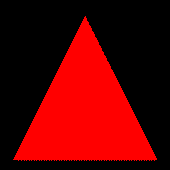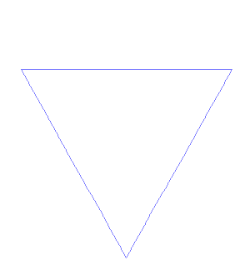
Science
Art
Magick
Religion
Blog
PentaclePower
Pranayamatron
Chaos, Religion and the New World (Dis)Order.
While it is easy to point out the role of uncertainty and the danger of faith in science, it pains one to put into words what seems antithetical to religion: that there is no absolute truth to be had there either.
We should be sensitive to the feelings of the faithful, but never recommend that anyone should actually adhere to someone else's religion. Make one up for yourself maybe, and never take it too seriously, but don't ever buy one of those off the shelf models. Here's one reason why:
One of the aesthetics suggested by chaos theory is the property of fractals to display self similarity at different scales, as demonstrated by zooming in on the mini-Mandelbrots in the Mandelbrot set.
Another is their fractional dimensionality. Unlike Euclidean geometrical shapes fractals have borders of infinite complexity which interpenetrate their surroundings.
Applied to nature, these concepts are much more useful than linear measures for understanding phenomenon like clouds and turbulence. It is easy for casual observer to see the similarity of clouds or ripples of different sizes, or at various distances and magnifications. As well, anyone can see the lack of real borders between the clouds and the air, or between a whirlpool and the water.

If we look at human existence in this way, we will see that humans (and other living things) are also like this. Since we shed all our cellular material over a seven year period and new material is absorbed from our surroundings through the convoluted interfaces of our skin, lungs and digestive systems; we are more like a vortex moving through a medium than we are like a solid object. We dissipate through time; chances are you are occupying an entirely different physical body than the one you originally used to log onto the Internet that very first time, all those years ago, yet somehow there is a continuity of consciousness even though you think and feel different.
As such, we are similar to and yet different from each other, from our former "selves" and from our ancestors and evolutionary predecessors. The physical borders between our "selves" and the environment are indistinct, permeable and variable.
I have digressed, but my point is that I would like to apply these ways of looking at things to the subject of religion. The clip below demonstrates the property of self similarity in religion. We can see that figures such as Jesus and Moses are not unique occurrences in time but reiterations of a historical formula. And so truth in religion can not be absolute, but will tend to recur, self-similarly (like a self-fulfilling prophesy), in myths, social and family structures, and personal development - right down to WWJD (what would Jesus do) today.
I highly recommend you watch the whole movie. Zeitgeist is available in 13 parts on YouTube. I definitely want to write more about it in my blog, as the producers present some thought provoking ideas about the social structures used to control the masses and promote the New World Order.
On this page and in my blog I will explore other applications of non-linear dynamical aesthetics to religion such as mirror symmetries which allow some believers to interprete the Bible in the exact opposite way to which we are accustomed; where God is the bad guy and Lucifer is the hero.
Bibliography and Links
Turbulent Mirror, John Briggs & F. David Peat
Harper & Row, publishers, New York. 1989
PARADIGM THEORY: Foundations of Postmodern Science TR Young Red Feather Institute, for Advanced Studies in Sociology, 1991 http://uwacadweb.uwyo.edu/RED_FEATHER/chaos/parad.htm
SYMBOLIC INTERACTIONAL THEORY AND NONLINEAR DYNAMICS Social Magic in Human Activity, TR Young
Red Feather Institute, for Advanced Studies in Sociology, 1991
http://critcrim.org/redfeather/chaos/ab-sit.htm
On Creativity, David Bohm, edited by Lee Nichol
Rutledge, 1998
A Life of Its Own, Norman White/Steev Morgan
El Centro Nacional de las Artes, Mexico DF, 1997
The World is Sound: Nada Brahma, Joachim-Ernst Berndt
Destiny Books, Rochester Vermont, 1987
Kundalini Tantra, Swami Satyananda Saraswati
Yoga Publications Trust, Munger, Bihar, India, 1984
Tattwa Shuddhi, Swami Satyasangananda
Yoga Publications Trust, Munger, Bihar, India, 1984
Liber Null, Peter J Carroll
Weiser Books, 1987
Liber Kaos, Peter J Carroll
Weiser Books, 1992
Biopotential Technology http://openeeg.sourceforge.net/doc/links-biopsy.html
Open Source Order of the Golden Dawn
http://www.osogd.org/
The Bodymissing Project, Vera Frenkel, 1996 http://www.yorku.ca/bodymissing/
The Institute: or, What we do for Love, Vera Frenkel, 2000
http://the-national-institute.org/theinst/
Utopics, Geoff Pugen, 2007
http://utopics.ca/
Masonic roots of America
http://www.guba.com/watch/3000032651
The Secret, Rhonda Byrne
Prime Time Productions, 2006
http://thesecret.tv/
